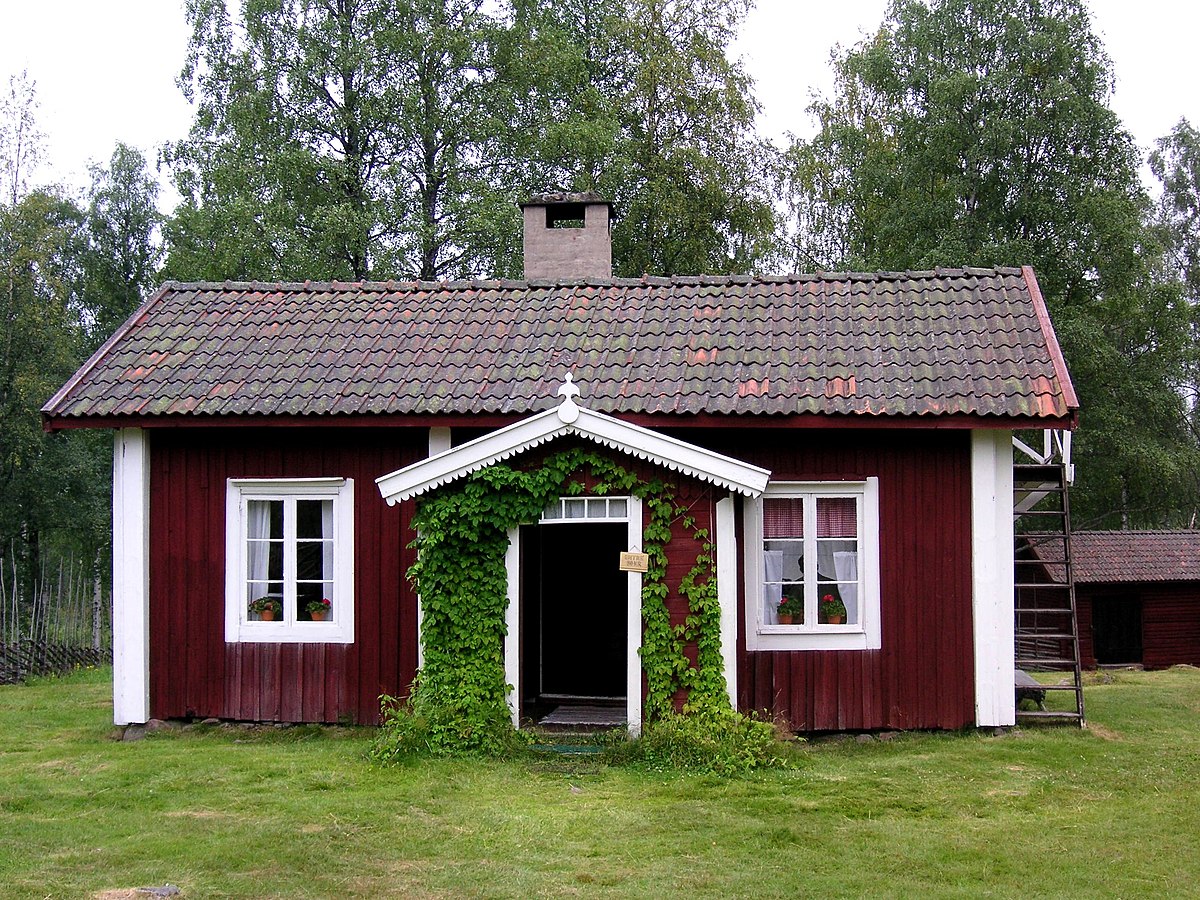 | ||
A torp is the emblematic summer house of Sweden, a small cottage painted with Falu red and white, and a proof of how urbanization took place quite late in all of Scandinavia. In the meaning of "primitive second home", the concept exists under other names in Danish and Norwegian ("hytte") and Finnish ("mökki").
The word is cognate to Anglo Saxon Thorp or Thorpe, and has changed meaning a few times. Before the 16th century, a torp was a separate farm, usually established by a farmer that moved out from a village, that with time often grew to become a village of its own. In 16th century Sweden, then including Finland, a torp was the term for the smallest size of a farm, paying a fourth of a "full" farm's taxes. When that classification became obsolete, a torp became a leased farm (with short lease times typically of one or a couple of years), paid for with manual work on the owner's fields.
Since the mid 20th century, most of those torp cottages still existing in Scandinavia serve as summer homes for city dwellers. Before that, being brought up in a torp was a sign of relatively modest ancestry, with lower status than that of life long tenants—and a lot lower compared to that of freeholding farmers, however small their farm were—but higher on the social ladder than for children of farm hands, maids and backstugusittare.
In Danish and Norwegian the common noun for an inhabitant of a torp is husmann/husmand – a man with a house. They used to own their houses, but not the land.
Torp is also used as a surname in Scandinavia.
